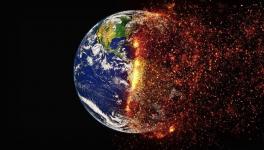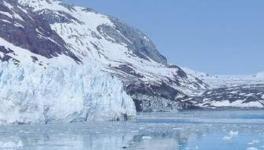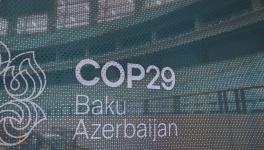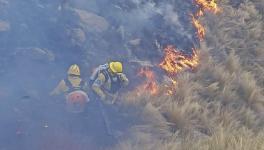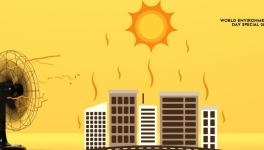Banned Ozone-Depleting CFCs Rise Again; Scientists Don’t Know Sources
Delhi: Chlorofluorocarbon or CFCs, the potent destroyers of the ozone layer, are on the rise again. In a latest study published in Nature Geoscience, a global team of scientists reported having found a record high level of five CFCs banned under the Montreal Protocol. This has raised concerns as CFCs not only destroy the ozone layer, which protects us from harmful UV radiation from the sun, but are also potent greenhouse gases, meaning they contribute to global warming.
The release of CFCs into the atmosphere has been restricted under the Montreal Protocol signed in 1987. The Montreal Protocol envisioned a phase-out of CFCs at a global scale by 2010. The international effort has been seen as a success. The UN (United Nations), recognising the global success story, said that the ozone layer is on track to recovery.
According to a panel backed by the UN, “If current policies remain in place, the layer is expected to recover to 1980 values by 2040.” This was said in a UN release on January 9, 2023. However, contrary to what has been said here, the latest research revealed a 2.6-fold rise of five CFCs in the decade spanning 2010 to 2020.
Martin Vollmer of the Swiss Federal Laboratories for Materials Science and Technology, Dubendorf, Switzerland, who is a co-author of the study, agrees that the findings represent sort of a dichotomy. In a statement to an article about the research in Nature Briefing, Vollmer was quoted as saying, “This shouldn’t be happening. We expect the opposite trend; we expect them to slowly go down.”
Will the rise in CFCs hamper the ozone recovery process? What other consequences does the rise have in a world where concerns about man-made climate change is ever increasing? Luke Western, Research Associate at Bristol University, UK, who led the study, explained these issues in his statement in the earlier article: “At current levels, these CFCs do not pose much threat to the ozone layer’s healing. Given that they are potent greenhouse gases, eliminating emissions of these CFCs will also have a positive impact on Earth’s climate. The collective annual warming effect of these five chemicals on the planet is equivalent to the emissions produced by a small country like Switzerland.”
Do Scientists Find Clues on Sources of CFC Rise?
As mentioned earlier, the team of researchers found that five CFCs have been on the rise in the last decade. Luke Western, along with another co-author Johannes Laube, wrote about their findings in ‘The Conversation’ and said that three out of the five CFCs, namely CFC-113a, CFC-114a and CFC-115, can be released as by-products during the manufacture of other chemicals. Importantly, the chemicals that produce CFCs as by-products are mostly HFCs or hydrofluorocarbons. HFCs are allowed as per the Montreal protocol and have been used as an alternative to CFCs.
However, the other two CFCs that the researchers detected to be on the rise, CFC-13 and CFC-112a, are worrying as they didn’t find a ‘plausible source’ of their emission.
However, experts also see the positive side of the research and the findings and the possibilities such research projects bear for the future. Andreas Engel is amongst such experts, who is an atmospheric scientist at Goethe University, Frankfurt, Germany. In the article in Nature Briefing, Engel was quoted as saying, “The research shows that the global monitoring system is largely working. Scientists are keeping a close watch on the planet’s atmosphere and spotting problems. “We just need to find out where it is coming from and then people will be willing and obliged to fix it,” the scientist said.
It is worth mentioning here that a few years back, researchers detected a similar high rise of another CFC called CFC-11. A group of researchers, led by Stephen Montzka of NOAA (National Oceanic and Atmospheric Administration), USA, reported the unexpected increase of CFC-11 in 2018. The finding was published in Nature. Later, scientists traced the source of the rise in CFC-11, which was eastern China. They traced it with the help of high-frequency atmospheric observations in Gosan, South Korea and Hateruma, Japan, according to a research paper published in Nature in 2019.
The findings are eye-openers and the Montreal Protocol may need some amendments suggesting further restriction in the production of chemicals that create CFCs as by-products, Luke Western and Johannes Laube argued in their article in ‘The Conversation’.
Get the latest reports & analysis with people's perspective on Protests, movements & deep analytical videos, discussions of the current affairs in your Telegram app. Subscribe to NewsClick's Telegram channel & get Real-Time updates on stories, as they get published on our website.












